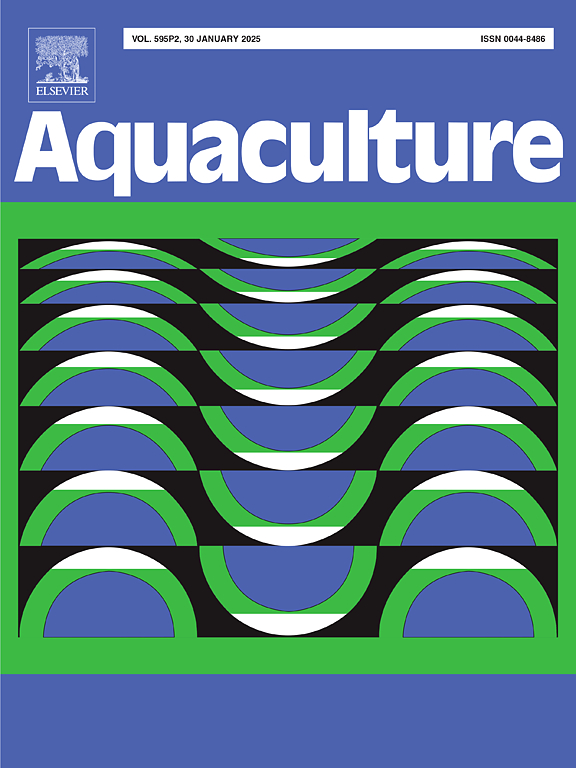Accuracies of genomic prediction accounting for genotype by environment remain high when using small sets of selected SNPs in barramundi Lates calcarifer
IF 3.9
1区 农林科学
Q1 FISHERIES
引用次数: 0
Abstract
Barramundi (Lates calcarifer) is an important tropical aquaculture species gaining popularity in farming and benefiting from genetic and genomic tools to achieve genetic improvement. However, the mass spawning behaviour of the species leads to disproportionate broodfish contribution and family representation, requiring genotyping of many fish for selection practices. Genotyping at an industrial-scale remains costly, hindering the development of aquaculture breeding programs, especially if high-density solid-state array-based platforms are applied. One strategy to reduce cost is using lower density panels while maintaining high accuracy of predictions. To assess the feasibility of lower-density SNP genotyping panels for genomic prediction of body weight in barramundi, the prediction accuracy of pedigree and genomic BLUP based on an Axiom panel of ∼52,000 (52 K) SNP was compared to four lower-density SNP scenarios; a) panels ranging from 2000 (2 K) to 25,000 (25 K) SNPs either randomly selected, or selected based on ranked effect size using single step GWAS (ssGWAS) for body weight for two grow-out systems (freshwater RAS and brackish water ponds); b) a custom-made 5000 (5 K) SNP panel, comprising SNPs selected for parentage assignment (1000 SNP), as well as 4000 randomly chosen SNPs from the 52 K after quality control filtering; c) a 5 K SNP panel selected based on largest marker effect size for body weight but used to evaluate genomic predictions in other commercially important traits to assess the possibility to use a single panel for all traits and finally; d) a 5 K SNP panel selected based on effect size from ssGWAS in two grow-out systems.
Genomic predictions under different scenarios confirmed a distinct relationship between panel size and prediction accuracy estimated with 10-fold cross validation. As the size of the SNP panel decreases from 25 K to 2 K (by selecting only trait-associated SNPs with large effects), prediction accuracy increased from 0.53 (±0.12) to 0.81 (±0.07) within a single trait (body weight) in a single environment. However, these panels did not consistently perform well with other traits, such as body shape and Fulton's condition factor K (0.41 ± 0.17 and 0.27 ± 0.19, respectively), and were only as accurate as the Reference (52 K) SNP panel when individuals from two different environments were included (0.62 ± 0.06).
In conclusion, using optimized panels is cost-effective and a high accuracy of prediction is retained when focusing on a single trait in a single environment. However, custom-made panels were found to be more versatile when selecting different traits in different environments.
求助全文
约1分钟内获得全文
求助全文
来源期刊

Aquaculture
农林科学-海洋与淡水生物学
CiteScore
8.60
自引率
17.80%
发文量
1246
审稿时长
56 days
期刊介绍:
Aquaculture is an international journal for the exploration, improvement and management of all freshwater and marine food resources. It publishes novel and innovative research of world-wide interest on farming of aquatic organisms, which includes finfish, mollusks, crustaceans and aquatic plants for human consumption. Research on ornamentals is not a focus of the Journal. Aquaculture only publishes papers with a clear relevance to improving aquaculture practices or a potential application.
 求助内容:
求助内容: 应助结果提醒方式:
应助结果提醒方式:


